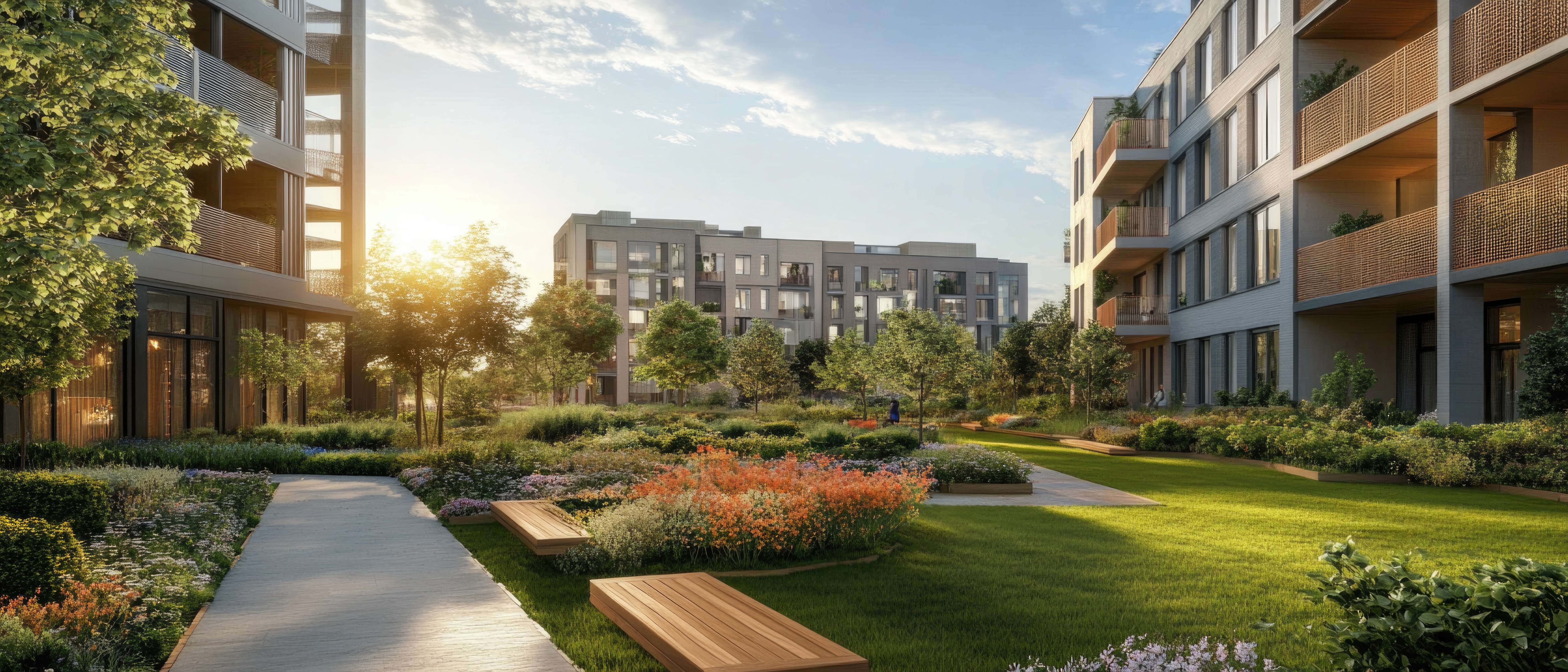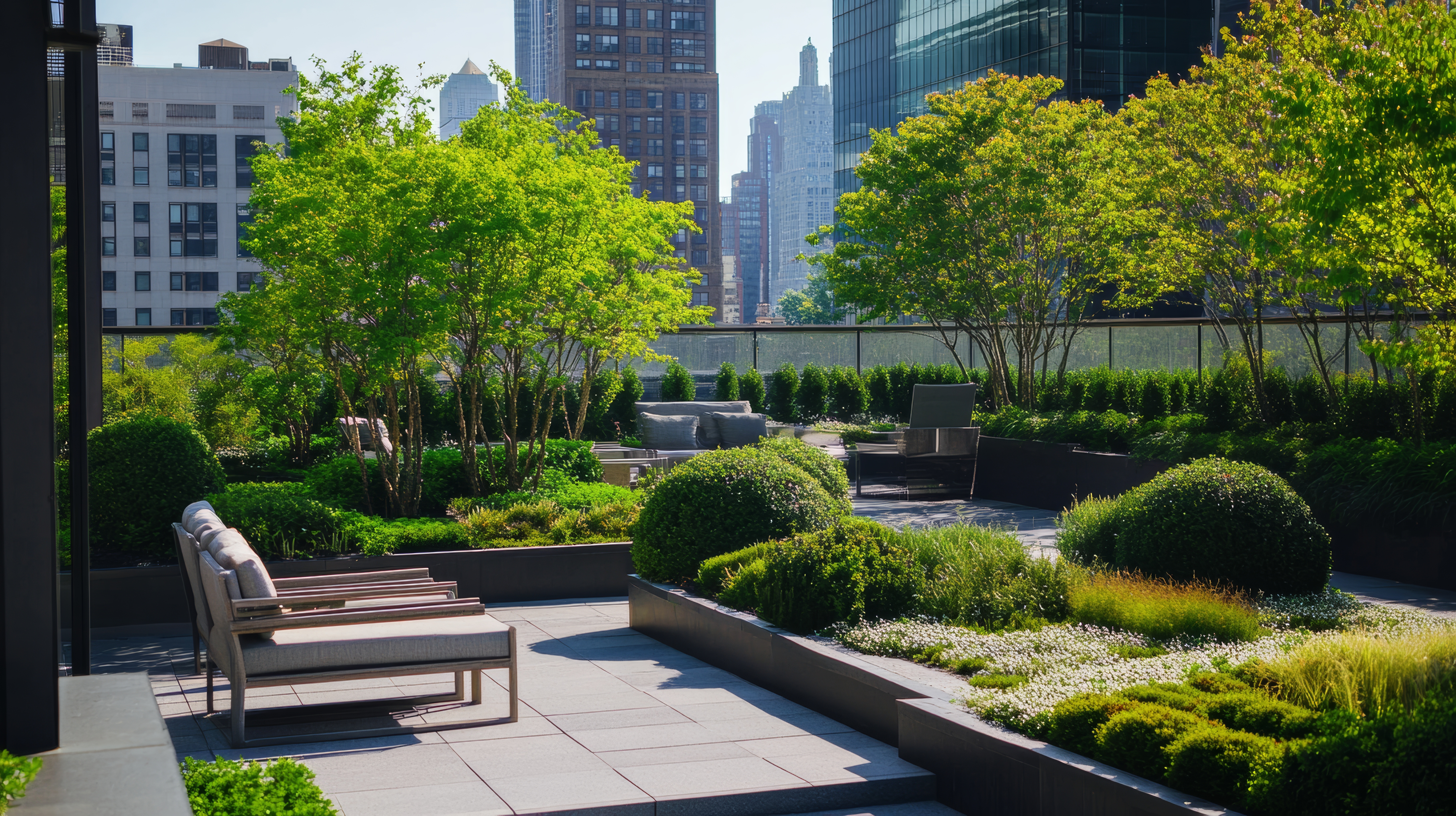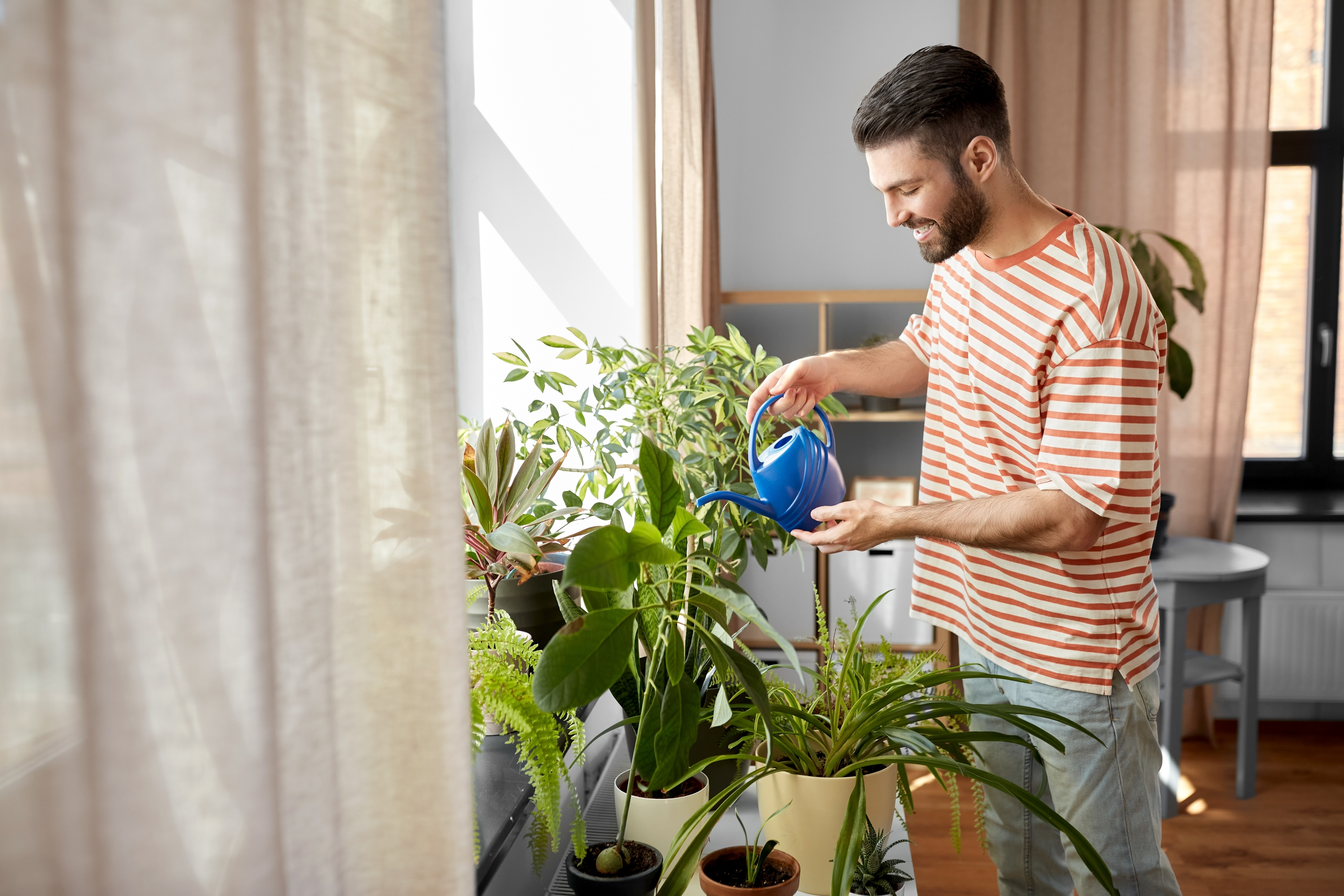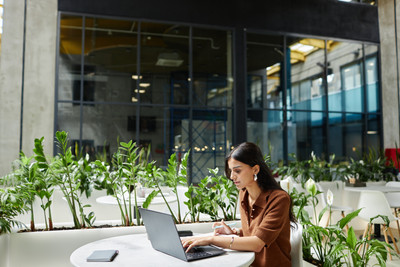The Importance of Green Spaces in Urban Environment
Posted by Jason Wyrwicz on Jun 6th 2025

Imagine walking down a city sidewalk in midsummer - concrete walls, metal railings, parked cars. The sun bounces off every surface, there’s no tree in sight, just heat, noise, and a whiff of exhaust. Sound familiar?
Because of the lack of green spaces in urban areas, many cities suffer from the “urban heat island effect,” where buildings and streets trap heat, making cities much hotter than nearby rural areas.
The World Health Organization recommends at least 9 square meters of green space per person. Yet in many cities, residents get half of that - if they’re lucky.
But you don’t need sweeping policies or major developments to make change. Whether it’s a rooftop, balcony, or windowsill, you can help green your space, including your street.
Read on to discover how you can contribute to a greener urban environment.
Why Are Green Spaces Important in Urban Areas?
Urban greenery does more than beautify - it’s functional, powerful, and necessary. Plants clean the air, cool the streets, soak up stormwater, and give wildlife a place to land.
Here’s why more plants belong in every urban space:
Plants clean the air
City air is loaded with particulate matter from traffic, industry, and construction. There’s a lot of dust and pollution floating around, especially tiny particles that are bad for your lungs and heart.
Luckily, plants can help. Leaves catch and hold these particles, acting like natural air filters. Even a few planters filled with the right shrubs or grasses can clean the air at the street level where we walk and breathe.
Plants cool down hot streets
Cities tend to trap heat. Asphalt and concrete absorb the sun and make streets much hotter than they would be in nature. This is called the “urban heat island” effect.
Plants help with it by providing shade that blocks sunlight from heating hard surfaces, and through evapotranspiration - where they release moisture into the air, which cools the surrounding area.
Green spaces in urban areas can drop the surrounding temperature by a few degrees. Planters with trees or tall grasses can create these cooler pockets almost anywhere.
Plants help prevent flooding
Heavy rain is becoming more common, and cities aren’t built to absorb it. Water runs off rooftops and pavements into sewers that quickly overflow, flooding streets and basements.
Plants help by slowing the water down. Their roots soak it up, and planters with built-in reservoirs catch and hold extra rain. That means less pressure on the drains and fewer floods after a storm.
Plants support urban wildlife
Cities can be tough on wildlife. But they don’t have to be. A little green goes a long way for pollinators like bees, butterflies, and birds looking for food and rest.
Native plants create mini ecosystems right in the middle of town. A balcony garden with lavender or native grasses can attract dozens of helpful species. It’s not just beautiful - it’s essential for biodiversity.
| Benefit | Key Data Point | Source |
|---|---|---|
| Air quality improvement | Trees remove up to 1.7 kg of particulates/year | EPA |
| Urban cooling | Parks are 1–3°C cooler than surrounding areas | ISPRS |
| Stormwater reduction | Green roofs retain 40–80% of rainfall annually | CSCE |
| Biodiversity support | Native plants attract 35x more pollinators | ResearchGate |
Human Benefits of Urban Green Spaces You Can Feel

Urban greenery doesn’t just clean the air - it directly improves our health, happiness, and sense of belonging. The human benefits of green spaces in urban areas are well documented, and you don’t need a giant park to experience them.
Less stress
The connection between urban green spaces and mental health is proven by research. Studies have consistently found that green spaces reduce stress levels, ease anxiety, and boost mood.
In one famous study, hospital patients who had a view of trees from their recovery rooms needed less pain medication and recovered faster than those who stared at a blank wall. Just seeing greenery is enough to soothe the nervous system and support mental recovery.
Green spaces also improve focus. In schools, children perform better on tests and show more concentration when their classrooms look out onto nature. And for adults, a lunch break in a nearby pocket park can be a powerful reset in the middle of a hectic workday.
Easier breathing
It’s as much about calm as it is about lungs. Children growing up on tree-lined streets are significantly less likely to develop asthma. The reason? Trees and plants help trap airborne pollutants, preventing them from entering our bodies.
Greener neighborhoods tend to have better air quality, especially at the pedestrian level. And since many respiratory problems begin in early childhood, adding greenery near schools, playgrounds, and homes isn’t just nice - it’s protective.
Friendlier communities
Green streets invite people to slow down. When a sidewalk is lined with planters or shaded by trees, people are more likely to walk, stop for a chat, or sit on a bench. These small moments of connection build what researchers call “social cohesion” - a sense of safety and belonging within a neighborhood.
Different types of urban green spaces, like parklets, community gardens, and even a few large pots in front of a café, can transform an area from transactional to communal.
Studies show that when public spaces are green and well-maintained, people report feeling safer and more connected to their neighbors. And in today’s screen-heavy world, that sense of real-world connection is more valuable than ever.
Better property values
Green spaces don’t just feel good - they’re financially smart. Properties near trees and well-kept greenery often sell for more. In fact, research has shown that homes located within 500 feet of a public park can see property values rise by up to 20%.
And it’s not just residential. Businesses benefit too. A small plaza with leafy planters, or even just a sidewalk café framed by some stylish pots, can increase foot traffic and make people more likely to linger and spend.
Greening Tight Spaces: Practical Ideas

Some of the most creative and effective urban greening happens in the smallest, most overlooked corners of the city.
Here are a few practical ideas for turning compact areas into mini urban oases:
Rooftop gardens
Got access to a flat roof? You’ve got planting potential. Lightweight fiberglass garden planters are perfect for rooftops because they don’t overload the structure like concrete or ceramic would. Fill them with herbs, native grasses, or even dwarf fruit trees to create a productive space that supports pollinators - and people.
Many cities now encourage rooftop planting as part of their green building codes. Even a small cluster of planters can reduce heat absorption, manage rainfall, and provide a peaceful escape for residents or office workers.
Balcony railing planters
If you live in a flat, your balcony is prime real estate for greening. Railing balcony planters are a great way to add greenery, even if you live in a small flat. They hang on the edge of your balcony, so they don’t take up any floor space. That means you still have room to sit, relax, or enjoy the view.
These planters are perfect for growing all kinds of plants - flowers, trailing ivy, or even small vegetables like cherry tomatoes. You can also grow herbs like basil or mint to use in your cooking.
Parklet conversions
What if one car space could become a mini park instead?
Many cities now support parklet conversions - replacing a single parking spot with benches, planters, and bike racks. These reclaimed spaces not only slow down traffic but also provide rest spots and add life to commercial districts.
Frost-resistant large planters work especially well here. They’re light enough to move during setup, yet stable enough to stay put. Businesses often use them to define outdoor seating areas, creating a barrier between guests and traffic while making the space more attractive.
Living Walls
Walls are often overlooked, but they’re a great opportunity for greenery. Living walls use stacked panels or pocket systems to grow plants vertically. They can cool buildings, clean the air, and even act as natural sound insulation.
Tall fiberglass planters are the best foundation - light yet sturdy enough to support the weight of a vertical system. Add trailing ferns, mosses, or drought-resistant succulents depending on your climate and sun exposure.
These walls are ideal for offices, schools, or residential buildings where ground space is limited but impact is still a goal.
Case Study: Chicago’s “Green Alley” Program
Chicago has taken the lead in finding green solutions for forgotten infrastructure. Since 2006, its Green Alley Program has been retrofitting alleys with permeable pavement, native plants, and strategically placed planters to reduce flooding and heat.
The results? Cooler neighborhoods, better drainage, and more inviting walking paths for residents.
Local cafés and shops have taken the idea further, setting up outdoor seating areas framed by large planters that provide greenery, privacy, and comfort. It’s proof that even the humblest city space can be reimagined to benefit both people and the planet.
How to Choose the Right Planter Material

When it comes to greening urban spaces, your choice of planter is just as important as the plants themselves.
Let’s break down the most common planter materials and why fiberglass has become the go-to for urban projects large and small.
- Terracotta - Classic, but heavy and prone to cracking in frost.
- Plastic - Cheap and lightweight, but fades and breaks easily.
- Wood - Natural look, but requires sealing and regular maintenance.
- Concrete - Durable, but very heavy and can stress rooftops or balconies.
Fiberglass - The Ultimate Choice for Urban Environments
Fiberglass combines the best of all worlds, especially for tight city spaces, rooftops, and balconies where every square inch counts.
- Lightweight - Easy to move, install, and rearrange - even large planters won’t stress load-bearing limits on balconies or roof decks.
- Durable - UV-stable, frost-resistant, and won’t crack or warp. Unlike plastic, it can handle years of exposure without fading or breaking.
- Insulating - Helps protect plant roots from both summer heat and winter chills, for healthier growth.
- Design-forward - Available in a wide variety of modern shapes, finishes, and custom colors to match any style.
Top Tip: Use Self-Watering Inserts
Want to cut down on watering? Many fiberglass planters are compatible with self-watering inserts. These reservoirs store extra water at the bottom of the planter and let the plant draw it up as needed - perfect for office buildings, rental properties, or high-rise balconies where regular watering can be a hassle.
Maintenance & Longevity Tips

A green space is only as good as the care it receives. With a few simple habits you can help your plants thrive long-term and keep your containers looking sharp.
Choose the right soil mix
Urban planters need a growing medium that supports healthy roots and won’t compact over time. Use a high-quality potting mix with good drainage. Add perlite or vermiculite for airiness.
Prune seasonally
Seasonal pruning keeps plants from getting leggy or overcrowded and encourages new, healthy growth.
- Spring - Clear away winter damage and shape your plants.
- Summer - Trim spent flowers and any overgrowth that shades smaller plants.
- Fall - Cut back perennials and prep for cooler months.
- Winter - In colder climates, some plants may need to be cut back completely or brought indoors.
Water wisely
Urban planters dry out faster than in-ground gardens. Here’s how you can manage moisture effectively:
- Add mulch - A layer of bark chips, straw, or even decorative gravel helps retain water and reduce evaporation.
- Use self-watering inserts - These reservoirs reduce the need for daily watering and help prevent root rot.
- Install drip irrigation - For larger or commercial setups, a low-flow irrigation system saves time and water.
- Check drainage - Always ensure your planters have proper drainage holes - standing water leads to root rot.
Clean your planters
Keeping your containers clean not only looks good, it also helps avoid mold, algae buildup, and pest issues. For fiberglass planters, wipe the surface gently with mild soap and a soft cloth. Avoid abrasive pads that can scratch the finish. Do a deep clean once per season, especially if rotating plant types or changing soil.
Want a full checklist to keep your planters in top form all year round? Browse our planter maintenance guide.
Policy & Community Action
Green streetscapes are built through everyday choices and local momentum. You don’t have to wait for City Hall to take the lead - here’s how you can help turn policy into plants:
- Tap into green incentives - Many cities now offer planning rewards for greening efforts. If you’re part of a development, business, or even a condo board, look into LEED, WELL, or local rebates for green roofs, planters, and native plantings.
- Start a local pilot - Pitch a small greening project to your HOA, council, or business district - like parklets or shared planters.
- Build community through green - Community gardens, public planter beds, and rooftop projects bring people together. Organize a planting day on your block or start a rooftop garden with your building.
Want to see how powerful this can be at scale? The World Economic Forum’s report on urban forestry outlines how cities around the world are using greenery to boost resilience, wellbeing, and sustainability.
Start Creating Your Green Space Today
So why are urban spaces important? From cooling streets to boosting mental health, the case for urban green spaces is clear.
Whether you’re a city dweller with a balcony or a business owner with sidewalk space, you have the power to create beauty, comfort, and function through greenery. Start small today with a pair of fiberglass planters designed for city life - lightweight, stylish, and built to last.
Need design inspo? Browse our urban planter lookbook for ideas on how to green your space with confidence.



